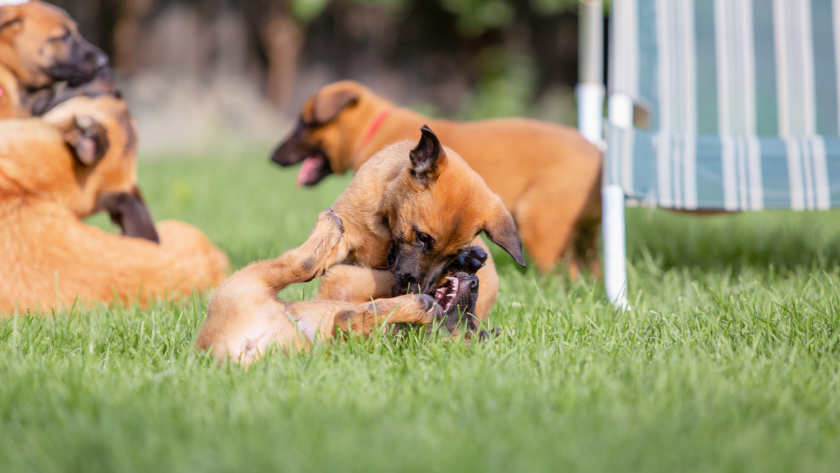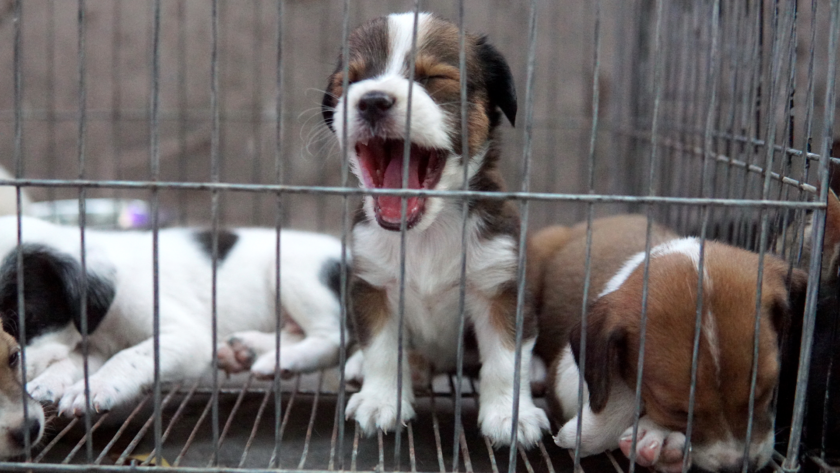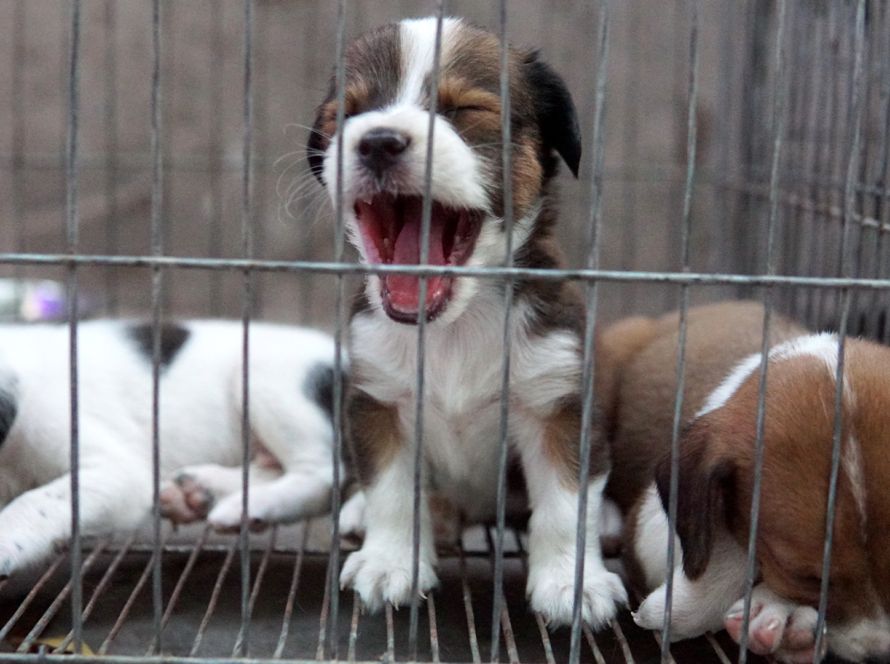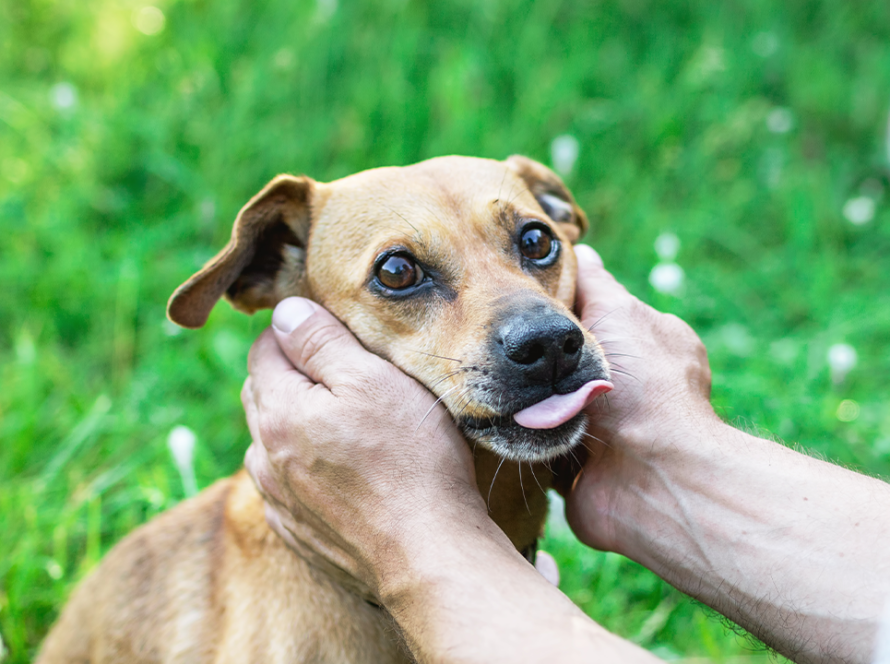The forlorn sound of a dog whines in crate can tug at any pet owner’s heartstrings. It’s a scenario familiar to many and can lead to sleepless nights filled with concern and frustration. But what does dog whines in crate signify? Is your dog in distress, or are they simply trying to communicate a need, or could it be a behavioural habit that’s developed over time?
Understanding why your dog whines in crate is the crucial first step to addressing and correcting the behavior. It’s essential to discern whether this vocalization arises from needs like hunger or thirst, anxiety and fear, or if it’s simply a bid for your attention. As dog owners, deconstructing this behavior not only aids in your dog’s well-being but ensures a harmonious living environment for both of you.
Throughout this blog, we’ll provide an overview of effective training techniques to quell the whines and transform your dog’s crate into a sanctuary of serenity. While solutions do exist, they aren’t immediate — patience and consistency will be your guiding principles. The emphasis here will be on fostering a bond of understanding and communication with your dog, one that respects their emotional needs while gently guiding them towards more desirable behaviors.
Here are some of best dog crates for cars. Click Here

The Psychology Behind a dog whines in crate: Separation Anxiety and More
Before delving into training techniques, it’s essential to understand the reasons for your dog whines in crate. Dogs are pack animals, and while they may have successfully adapted to domestic life, their instinctual needs still remain. For a dog, being confined in a crate can trigger feelings of separation anxiety that stem from an innate need for security within their pack. In the wild, a dog’s pack offers physical protection and a sense of belonging — both essential for survival. When your dog whines in crate, they may perceive this as separation from their pack or family, leading to feelings of anxiety.
Apart from separation anxiety, dog whines in crate can also stem from other emotional triggers like fear and frustration. Dogs use vocalization as a means of communication, and in the confined space of a crate, dog whines in crate may be their way of expressing these emotions. It’s also worth noting that whining can become a learned behavior for attention-seeking dogs. If your dog has learned that whining results in them getting let out of their crate or receiving attention from you, they may continue to use this tactic.

Exploring the Emotional Reasons for a dog whines in crate:
Exploring the emotional reasons behind your dog whines in crate can provide deeper insights into their mental state and needs. It’s critical to recognize that whining isn’t just a random act; it’s a form of communication. If your dog whines in crate due to separation anxiety, it means they’re feeling insecure and anxious about being isolated from you. This anxiety can be particularly strong in dogs who have a strong bond with their owners or have experienced past traumas related to separation or abandonment.
Understanding these emotional dog whines in crate undercurrents is pivotal in formulating an effective response or training strategy to mitigate their distress. It requires a compassionate approach that addresses not only the behavior but also the emotional needs and well-being of your furry companion.
Efficient training methods revolve around building your dog’s confidence and reducing their anxiety about being alone. Gradual crate training, paired with positive reinforcement, can significantly alter their perception of the crate from a place of isolation to one of safety and comfort. Starting with short periods of confinement and gradually increasing the duration can help your dog adjust at a comfortable pace.

10 Reasons Why Your Dog Whines in Crate:
- Separation Anxiety
- Lack of Exercise
- Needs to Relieve Themselves
- Wants Attention
- Not Enough Comfort
- Crate is Too Small
- Boredom
- Too Much Time in Crate
- Unfamiliar Environment
- Seeking Reward
Separation Anxiety
Separation anxiety is one of the most common reasons dogs whine in crate. This anxiety is often due to the fear of being isolated or away from their owners. Dogs are social creatures by nature and can feel stressful when left alone, sometimes leading to vocalization as an expression of their distress. To mitigate this, gradually acclimatizing your dog to being alone and ensuring they have comforting items in their crate can help reduce dog whines in crate.
Lack of Exercise
A dog with pent-up energy is more likely to express restlessness and discomfort, potentially leading to dog whines in crate. Regular, vigorous exercise is essential for keeping your dog physically fit and mentally stimulated, which assists in promoting a more restful state when crate time comes around. Tailoring the amount and intensity of exercise to your dog’s age, breed, and health status can significantly impact their overall well-being and behavior when crated.
Needs to Relieve Themselves
Sometimes, the simplest explanation for dog whines in crate is the need to go outside for a bathroom break. Puppies, in particular, have smaller bladders and will need to relieve themselves more frequently. Ensuring a consistent schedule for bathroom breaks can help reduce incidents of dog whines in crate due to discomfort. It also teaches your dog that they can trust you to meet their basic needs, further strengthening your bond.
Wants Attention
Dog whines in crate can also be a learned behavior if the dog realizes it gains them the attention of their owner. Whether it’s because they’re bored, lonely, or simply seeking interaction, responding to dog whines in crate can inadvertently reinforce the behavior. Establishing a balance of providing attention when your dog is quiet and ignoring whining (as long as their essential needs are met) can help curb this behavior.
Not Enough Comfort
Just like us, dogs appreciate a comfortable rest area. If the crate isn’t inviting or lacks adequate bedding, your dog whines in crate due to discomfort. Making the crate a cozy and welcoming space with soft blankets and perhaps a favorite toy can make a significant difference in how your dog perceives their crate, transforming it into a place they’re happy to spend time in.
Crate is Too Small
A crate that’s too small can make dogs feel cramped and unable to relax. It’s important to choose a crate size that allows your dog to stand, turn around, and lie down comfortably. An appropriately sized crate provides a sense of safety and security, reducing feelings of confinement and distress.
4 Tips to choose the Best size of dog crates by breed. Click Here
Boredom
A bored dog is often a vocal dog. Without sufficient mental stimulation, dogs can resort to dog whines in crate out of boredom. Introducing puzzle toys, engaging in playtime before crating, and varying your dog’s routine can help keep their mind engaged and reduce the likelihood of whining due to boredom.
Too Much Time in Crate
Even with adequate exercise and mental stimulation, spending too long in a crate can lead to discomfort and dog whines in crate. It’s crucial to balance crate time with plenty of opportunities for exercise, play, and companionship to ensure your dog’s physical and emotional needs are being met.
Unfamiliar Environment
Changes in a dog’s environment can also trigger anxiety and discomfort, leading to dog whines in crate. Moving to a new home, rearranging furniture, or introducing new family members or pets can all contribute to a sense of unease. Providing extra comfort and reassurance during times of change can help your dog adjust more smoothly.
Seeking Reward
If a dog has been rewarded for whining in the past, whether through treats, extra attention, or being let out of the crate, they may continue the behavior in anticipation of a reward. It’s important to encourage calm and quiet behavior with rewards, rather than responding to whining, to avoid reinforcing the unwanted behavior.

What are some effective strategies for dealing with a dog whines in crate?
- Gradual Crate Training
- Consistent Exercise Routine
- Establishing a Comfortable Environment
- Ignoring Attention-Seeking Whining
- Positive Reinforcement Techniques
Gradual Crate Training
Gradual crate training involves slowly acclimatizing your dog to their crate, making the crate a positive and safe space. Start with short intervals of time in the crate while you are present, gradually increasing the duration and eventually leaving the room. Use treats and praise to create positive associations with the crate, helping to reduce anxiety and discomfort.
Consistent Exercise Routine
A consistent exercise routine ensures your dog expends energy and has less pent-up frustration that could lead to whining. Tailor the exercise to your dog’s breed, age, and health to ensure they are getting enough physical activity. This can range from long walks to playing fetch or running, which also strengthens your bond.
Establishing a Comfortable Environment
Making the crate comfortable and inviting can significantly reduce whining. This includes adding soft bedding, favorite toys, and even an item with your scent. A warm and cozy crate becomes a safe haven for your dog, rather than a place of isolation.
Ignoring Attention-Seeking Whining
If you determine the whining is purely for attention and all other needs have been met, it’s crucial to avoid reinforcing the behavior by giving in. Instead, wait until your dog is quiet before interacting with them. This teaches that calm behavior, rather than whining, is the way to gain your attention.
Positive Reinforcement Techniques
Using positive reinforcement to encourage quiet behavior in the crate can be highly effective. Reward your dog when they enter the crate willingly or remain quiet for extended periods. This could be in the form of treats, praise, or playtime, reinforcing the behavior you want to see.
If your dog continues to whine despite following the initial recommendations, don’t lose hope. There are additional strategies you can employ to help curb this behavior. Consider varying the crate’s location to somewhere more or less secluded, depending on your dog’s preference for socialization or privacy.
10 Essential Tips for Managing a Whining Dog in the Crate:
- Create a Consistent Schedule
- Use Calming Aids
- Provide Adequate Mental Stimulation
- Check for Medical Issues
- Associate the Crate with Positive Experiences
- Adjust the Crate’s Location
- Limit Visual Stimuli
- Ensure Proper Crate Size
- Use a Crate Cover
- Seek Professional Help if Needed
Create a Consistent Schedule
Establishing a consistent daily routine helps dogs feel secure and understand what to expect next, reducing anxiety and subsequent whining. This includes regular feeding times, bathroom breaks, exercise, playtime, and crate time.
Use Calming Aids
Calming aids such as pheromone diffusers, calming chews, or even gentle music can help soothe a distressed dog in their crate. These aids can be particularly helpful in cases of separation anxiety or fear of loud noises.
Provide Adequate Mental Stimulation
Keeping your dog’s mind engaged with puzzle toys, training sessions, or interactive games can prevent boredom, which often leads to whining. This is crucial for intelligent breeds that require constant mental engagement.
Check for Medical Issues
Persistent whining could indicate underlying health issues. It’s important to consult with a veterinarian to rule out any medical problems that could be causing discomfort or pain to your dog.
Associate the Crate with Positive Experiences
Use treats, toys, and praise to make the crate a rewarding place for your dog to be. Feeding meals inside the crate or providing high-value treats only when they’re crated can help build a positive association.
Adjust the Crate’s Location
The crate’s location can significantly affect your dog’s comfort level. Some dogs prefer to be in a quiet, secluded area, while others might feel more secure in a busy part of the house where they can observe the household’s comings and goings.
Limit Visual Stimuli
For some dogs, too much to look at can lead to overstimulation and anxiety. If this is the case, consider placing the crate in a less busy area or using a crate cover to block out excessive visual stimuli.
Ensure Proper Crate Size
A crate that is too small can make a dog feel cramped, while one that’s too large may not provide the sense of security dogs look for. Ensure the crate is the right size for your dog to stand up, turn around, and lie down comfortably.
Use a Crate Cover
A crate cover can help create a more den-like atmosphere, providing a sense of security and privacy. It can also help limit visual stimuli, which might be particularly useful at night or during stressful situations.
Seek Professional Help if Needed
If you’ve tried these strategies and your dog’s whining persists, it may be time to consult a professional dog trainer or a veterinarian for further advice. Persistent whining can sometimes be a sign of deeper issues such as separation anxiety or other behavioral concerns.
CONCLUSION: Help Your Dog Feel At Home in the Crate
Managing a whining dog in the crate can be challenging, but with patience, consistency, and positive reinforcement, it is possible to help your dog feel more comfortable and content in their crate. By creating a routine, providing mental stimulation, and using calming aids if necessary, you can help reduce dog whines in crate and make the crate a peaceful place for your furry friend. Remember always to consult a professional if you need extra assistance in addressing your dog’s dog whines in crate. With love and understanding, you and your pup can work together to overcome this common issue.
FAQS:
Q. Why does my dog whines in crate?
- There are several reasons why a dog whines in crate, including separation anxiety, boredom, or discomfort. It’s essential to identify the cause of the dog whines in crate in order to address it effectively.
Q. Is it normal for a dog whines in crate?
- It is not uncommon for dog whines in crate, especially when they are first introduced to it. However, if the dog whines in crate persists or becomes excessive, it may indicate underlying issues that need to be addressed.
Q. How can I help my dog stop dog whines in crate?
- Providing a consistent schedule, using positive reinforcement techniques, and ensuring proper crate size and location are all effective ways to help reduce dog whines in crate. In some cases seeking professional help may also be necessary.
Q. What are some effective strategies for dealing with a dog whines in crate?
- Some effective strategies include creating a consistent schedule, providing mental stimulation, using calming aids, and seeking professional help if needed.
Q. Are there any specific breeds that are more prone to dog whines in crate?
- Certain breeds, such as terriers and herding dogs, may be more prone to dog whines in crate due to their high energy levels and need for mental stimulation. However, every dog is unique, and individual traits and experiences can also contribute to dog whines in crate. Overall, it’s important to address any excessive dog whines in crate regardless of the breed.
That being said, it’s always a good idea to research your specific breed and their common behaviors to better understand and address any dog whines in crate tendencies. Remember, every dog is different and may require different strategies to help them feel comfortable in their crate. With patience, love, and consistency, you can help your dog feel at home in their crate and reduce whining behavior. So, it’s important to understand the specific needs of your own furry friend and tailor your approach accordingly.




3 Comments